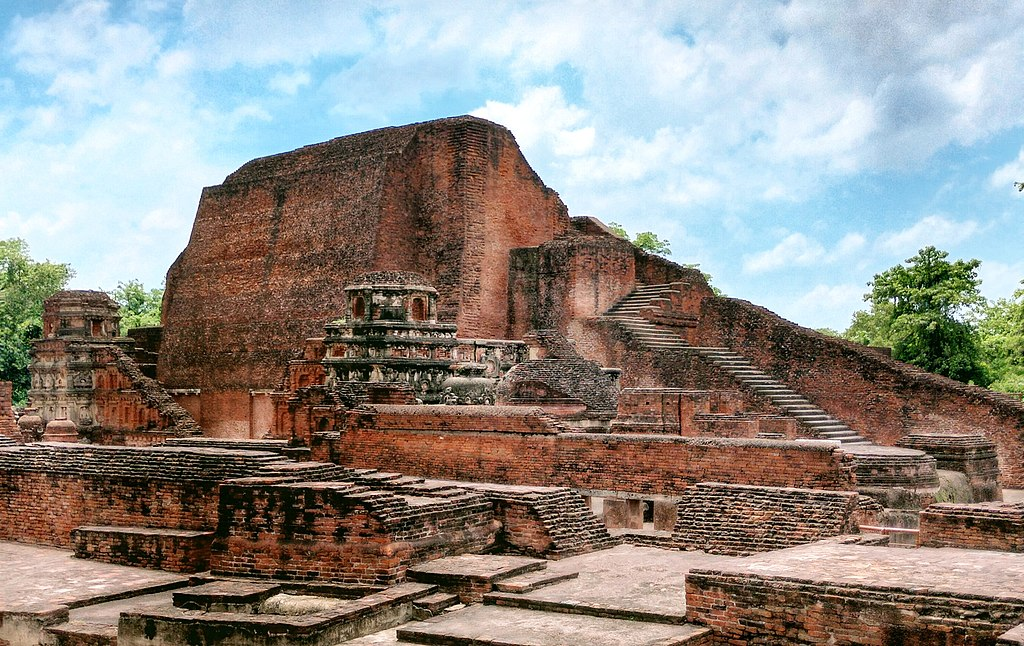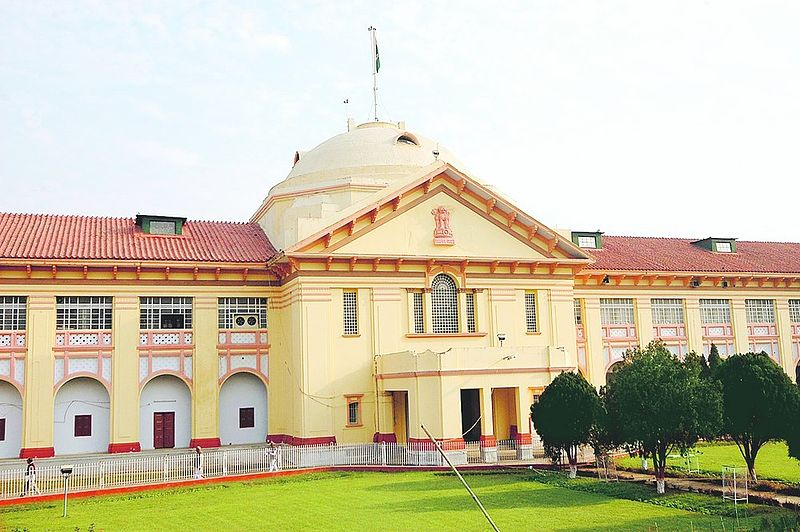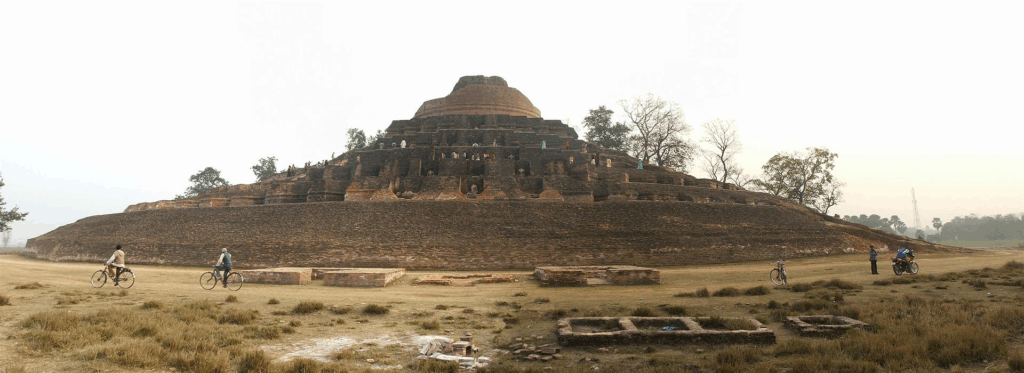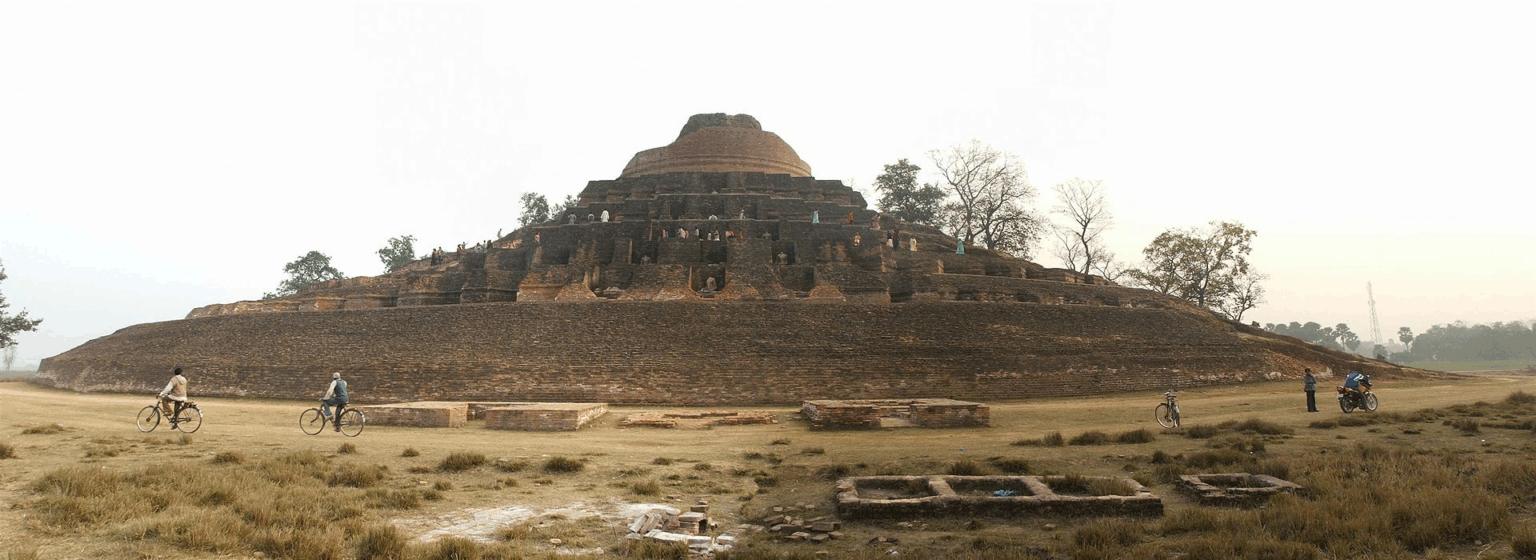In this article, I will cover the Best Places to Visit in Bihar,, which is historically, spiritually, and culturally significant.
Bihar is home to the holy site of Bodh Gaya, the ancient Nalanda ruins, and the bustling city of Patna.
These places provide a unique combination of heritage, spirituality and natural beauty, making it a must for travelers.
Key Points & Best Places To Travel In Bihar
| Place | Key Points / Highlights |
|---|---|
| Bodh Gaya | UNESCO World Heritage Site; Mahabodhi Temple; place where Lord Buddha attained enlightenment. |
| Nalanda | Ancient Nalanda University ruins; archaeological museum; major Buddhist learning center. |
| Rajgir | Hot springs, Vulture’s Peak, Glass Bridge, Ropeway to Vishwa Shanti Stupa; Buddhist and Jain significance. |
| Vaishali | Birthplace of Lord Mahavira; relic stupa; Ashokan Pillar; ancient capital of Licchavi Kingdom. |
| Patna | State capital; Golghar, Patna Sahib Gurudwara, Patna Museum, Ganga Riverfront. |
| Gaya | Vishnupad Temple, Phalgu River rituals, linked to Pind Daan ceremonies for ancestors. |
| Kesariya Stupa | One of the largest Buddhist stupas in the world; Ashokan heritage site. |
| Sasaram | Sher Shah Suri’s tomb (architectural marvel in water); historical forts. |
| Rohtasgarh Fort | Majestic hill fort; ancient architecture; scenic trekking spot. |
| Bhagalpur | Famous for silk production; Vikramshila ruins; natural beauty near Ganga River. |
10 Best Places To Travel In Bihar
1. Bodh Gaya
Bodh Gaya is located in the Gaya district of Bihar. This is the place where Lord Buddha became enlightened under the Bodhi Tree making it a place of great importance. Bodh Gaya is a great spiritual center for devotees and tourists.

The Mahabodhi Temple is a central attraction. It is a UNESCO World Heritage Site. Tourists take a great interest in the Bodhi Tree complex, and the international monasteries built by Japan, Thailand, and Bhutan.
Muchalinda Lake is a lovely place to visit. Monks chanting in the area is something special about the place.
Bodh Gaya – Land of Enlightenment
- Mahabodhi Temple – UNESCO World Heritage Site where Lord Buddha attained enlightenment.
- Bodhi Tree – The sacred fig tree directly linked to Buddha’s awakening.
- Great Buddha Statue – A 80-foot tall statue representing peace and meditation.
- International Monasteries – Temples built by countries like Japan, Thailand, and Bhutan.
- Muchalinda Lake – Serene lake associated with Buddha’s meditation story.
2. Nalanda
Nalanda, once a flourishing ancient university, represents the glorious heritage of India’s education and Buddhist philosophy.
The ruins of Nalanda University—dating back to the 5th century CE—showcase red-brick monasteries, temples, and lecture halls that once hosted scholars from across Asia.
Archaeological findings reveal its global academic significance before it was destroyed in the 12th century.

Nearby, the Nalanda Archaeological Museum houses rare artifacts, sculptures, and inscriptions.
Modern-day Nalanda University continues the legacy of learning. The site’s calm environment and historical depth make it a must-visit destination for history lovers, researchers, and those seeking spiritual and intellectual inspiration.
Nalanda – Ancient Seat of Learning
- Ruins of Nalanda University – Remains of one of the world’s oldest universities.
- Nalanda Archaeological Museum – Houses ancient artifacts and Buddha statues.
- Hiuen Tsang Memorial Hall – Built in memory of the Chinese traveler and scholar.
- Surya Mandir – Dedicated to the Sun God, reflecting ancient Hindu culture.
- Modern Nalanda University – Revived institution inspired by the ancient center of learning.
3. Rajgir
Located in the Nalanda district, Rajgir is surrounded by the Rocky Hills. This town has a rich history in both Buddhism and Jainism.
It is famous for being the capital of the ancient Magadha Empire and holds a great place in history.
The attractions that the visitors can enjoy include the Hot Springs, which are recognized for their healing qualities, and the Vishwa Shanti Stupa

Which can be reached by a beautiful, scenic ropeway. It is at the Vulture’s Peak( Gridhakuta Hill) that Buddha gave numerous sermons.
The new Safari and glass bridge add a modern touch to the spiritual beauty of Rajgir. The combination of Rajgir’s beauty, history, and religion creates a wonderful travel experience.
Rajgir – City of Kings and Serenity
- Vishwa Shanti Stupa – White marble peace pagoda on Ratnagiri Hill.
- Ropeway Ride – Scenic cable car ride leading to the Shanti Stupa.
- Hot Springs (Brahmakund) – Sacred and therapeutic thermal springs
- Vulture’s Peak (Gridhakuta Hill) – Where Buddha preached several sermons.
- Rajgir Glass Bridge & Nature Safari – New attractions offering adventure and panoramic views.
4. Vaishali
Near Hajipur is Vaishali, an ancient town and the birthplace of the 24th Jain Tirthankara, Lord Mahavira. Vaishali was one of the first democracies in the world, governed by the Licchavi clan.
The remains of the Ashokan Pillar with its lion capital is a testimony to the town’s historical importance. For Buddhists, Vaishali is also very significant, as Lord Buddha delivered his last sermon here.

The Relic Stupa, Abhishek Pushkarini(coronation tank), and the excavated site nearby all draw pilgrims and historians alike.
The serene rural landscape and the cultural legacy of the area make Vaishali an ideal place for those who appreciate history and spirituality.
Vaishali – Birthplace of Lord Mahavira
- Ashokan Pillar – Ancient pillar with lion capital built by Emperor Ashoka.
- Relic Stupa – Enshrines Buddha’s relics, significant for Buddhists.
- Abhishek Pushkarini – Sacred coronation tank of Licchavi rulers.
- Birthplace of Lord Mahavira – Important pilgrimage site for Jains.
- Archaeological Sites – Excavated ruins showcasing Vaishali’s ancient republican heritage.
5. Patna
The vibrant capital of Bihar, Patna, exhibits a fine mixture of heritage and urbanization. Historically known as Pataliputra, Patna was the center of power during the Mauryan and Gupta empires.
The main attractions are the Golghar granary, the Patna Museum with its rare collectibles from Nalanda and Mauryan history, and the Patna Sahib Gurudwara, the birthplace of Guru Gobind Singh.

The Ganga Riverfront and Gandhi Maidan enhance the city’s splendor. Patna is also a major gateway to other prominent places, such as Vaishali and Nalanda.
With its blend of modern city, history, and Patna’s unique spirituality, the city is an amazing cultural hub.
Patna – Ancient Pataliputra
- Takht Sri Patna Sahib – Birthplace of Guru Gobind Singh, a revered Sikh shrine.
- Golghar – Historic granary offering panoramic city views.
- Patna Museum – Rich collection of Mauryan and Gupta artifacts.
- Ganga Riverfront – Scenic promenade for evening walks and boat rides.
- Kumhrar – Excavated remains of ancient Pataliputra’s Mauryan capital.
6. Gaya
Gaya is one of India’s most sacred cities. It is rich in both Hindu and Buddhist heritage. It is famous for the Vishnupad Temple.
Here, devotees believe a stone footprint of Lord Vishnu is set in stone. On the Phalgu River, devotees perform Pind Daan rituals every year.

Here, they pray for the freedom of their deceased ancestors. As Gaya is also home to Bodh Gaya, a centre for Buddhist spirituality, Gaya is a perfect blend of the two faiths.
With its ancient temples, caves and ghats, Gaya is a site of both historical and religious significance. It is an ideal destination for peace and quiet.
Gaya – City of Salvation
- Vishnupad Temple – Sacred temple with Lord Vishnu’s footprint.
- Phalgu River – The river on which Pind Daan rituals are performed.
- Mangla Gauri Temple – One of the 18 Shakti Peethas located in the India.
- Bodh Gaya (Nearby) – Prominent Buddhist pilgrimage site only 12 km away.
- Pretshila Hill – Known for ancestral rituals and breathtaking views.
7. Kesariya Stupa
Kesariya Stupa, located in East Champaran, is one of the largest Buddhist stupas in the world. It is said to have been built in recognition of the site of Lord Buddha’s gift of the begging bowl, just before attaining Nirvana.
The structure, rising to over a hundred feet, is a reflection of the grandeur of the Mauryan period.

The excavation of the site revealed a number of terraces, chambers, and a multitude of statues of the Buddha, serving as a testimony to the vast artistry of the ancient Buddhists.
Kesariya Stupa is a sight to behold, set in tranquil fields, and provides visitors a peaceful view of the Buddhist history of Bihar and its remarkable artistry.
Kesariya Stupa – Towering Buddhist Monument
- Largest Stupa in India – One of the tallest Buddhist stupas in the world.
- Buddha’s Begging Bowl Legend – Constructed on the site where Buddha gave his bowl before attaining Nirvana.
- Mauryan Architecture – Architectural marvel of the past with terraces and layered chambers.
- Buddha Statues and Relics – Buddhist artistry and archaeology on display.
- Peaceful Countryside Location – Fields and countryside enhance the peace and quietness of the area.
8. Sasaram
This place Sasaram which is located in the district Rohtas is the location of the great tomb of Sher Shah Suri, the founder of the empire which is called the Suri empire.
The tomb is remarkable in Indo-Islamic architecture and is said to be placed in the middle of an artificial lake and is compared to the Taj Mahal.

The town also has historical attractions like Rohtasgarh Fort and ancient mosques. The town’s historical importance is also proved by Sasaram’s connection to the Grand Trunk road, which in history was built by Sher Shah Suri.
Sasaram is an astonishing place to visit for history and architecture lovers interested in the medieval period of India.
Sasaram – Legacy of Sher Shah Suri
- Tomb of Sher Shah Suri – Beautiful Indo-Islamic monument with a tomb located in an artificial lake.
- Hasan Shah Suri Tomb – Another great sample of Afghan architecture.
- Rohtasgarh Fort (Nearby) – Fort of ancient times that was connected with Sher Shah’s empire.
- Grand Trunk Road Origin – Highway of historical importance, initiated by Sher Shah Suri.
- Ancient Mosques and Gateways – These structures illustrate the architecture and artistry from the Mughal time.
9. Rohtasgarh Fort
Sher Shah Suri and subsequent Mughal rulers recognized and exploited the strategic military importance of Rohtasgarh Fort.
Set amidst the Kaimur hill ranges, the fort is celebrated as one of India’s biggest hill forts. The complex covers several square kilometers and boasts several architectural marvels such as gates, temples, mosques, and even palaces.

These marvels lie within dense foliage, forming part of the fort’s almost completely untamed and lush surroundings.
The Rohtasgarh area also rewards visitors with a scenic fort approach and a wonderful panoramic view of the fort and valley. The site is a stunning combination of history, architecture, and the great outdoors.
Rohtasgarh Fort – Majestic Hill Fortress
- Massive Stone Walls – Imposing structures that stand the test of time.
- Palaces and Temples – Unique blend of Hindu and Muslim styles and forms.
- Gates like Hathiya Pol – Entrances hewn from single stone blocks.
- Scenic Trekking Routes – Assembling hills provide a combination of forests.
- Historical Significance – Forts of this area were attributed to Sher Shah Suri and the Mughal Empire.
10. Bhagalpur
Bhagalpur is recognized as the Silk city of India because of the Tussar silk weaves produced in the city and located on the banks of the Ganges.
The city is also recognized for its natural beauty and vegetation. It is in close proximity to the ruins of Vikramshila University.
The university was once a high prestige Buddhist learning center and the city reflects the intellectual advancements of the state of Bihar historically.

In addition to all of this, Bhagalpur has the Vikramshila dolphin sanctuary which is the habitat to the endangered freshwater Gangetic dolphin.
The city has several attractions and diverse vegetation which provides serenity to travelers as well as rich historical exploration.
Bhagalpur – Silk City of India
- Tussar Silk Production – Bhagalpur has one of the finest silk producing and silk weaving textiles in the country.
- Vikramshila University Ruins – One of the ancient centers of Buddhist studies.
- Vikramshila Dolphin Sanctuary – Sanctuary of the Gangetic Dolphin.
- Mandar Hill – Famed for ocean churning mythology.
- Ganga Riverfront Beauty – Scenic view of the river and the surrounding nature.
Conclsuion
in cocnlsuion Bihar is a land where history, spirituality, and culture come alive. From the enlightenment of Buddha in Bodh Gaya to the ancient wisdom of Nalanda and the architectural marvels of Sasaram, every corner tells a timeless story.
With its sacred sites, natural beauty, and rich heritage, Bihar offers travelers a truly soulful and enlightening journey.
FAQ
What is the most famous tourist place in Bihar?
Bodh Gaya, where Lord Buddha attained enlightenment, is the most famous tourist destination.
Which city is known as the “Silk City” of Bihar?
Bhagalpur is known as the Silk City for its high-quality Tussar silk.
Where was the ancient Nalanda University located?
It is located near Rajgir in Nalanda district.
What is special about Vaishali?
Vaishali is the birthplace of Lord Mahavira and an ancient republic.
Which is the capital city of Bihar?
Patna is the capital and cultural hub of Bihar.

